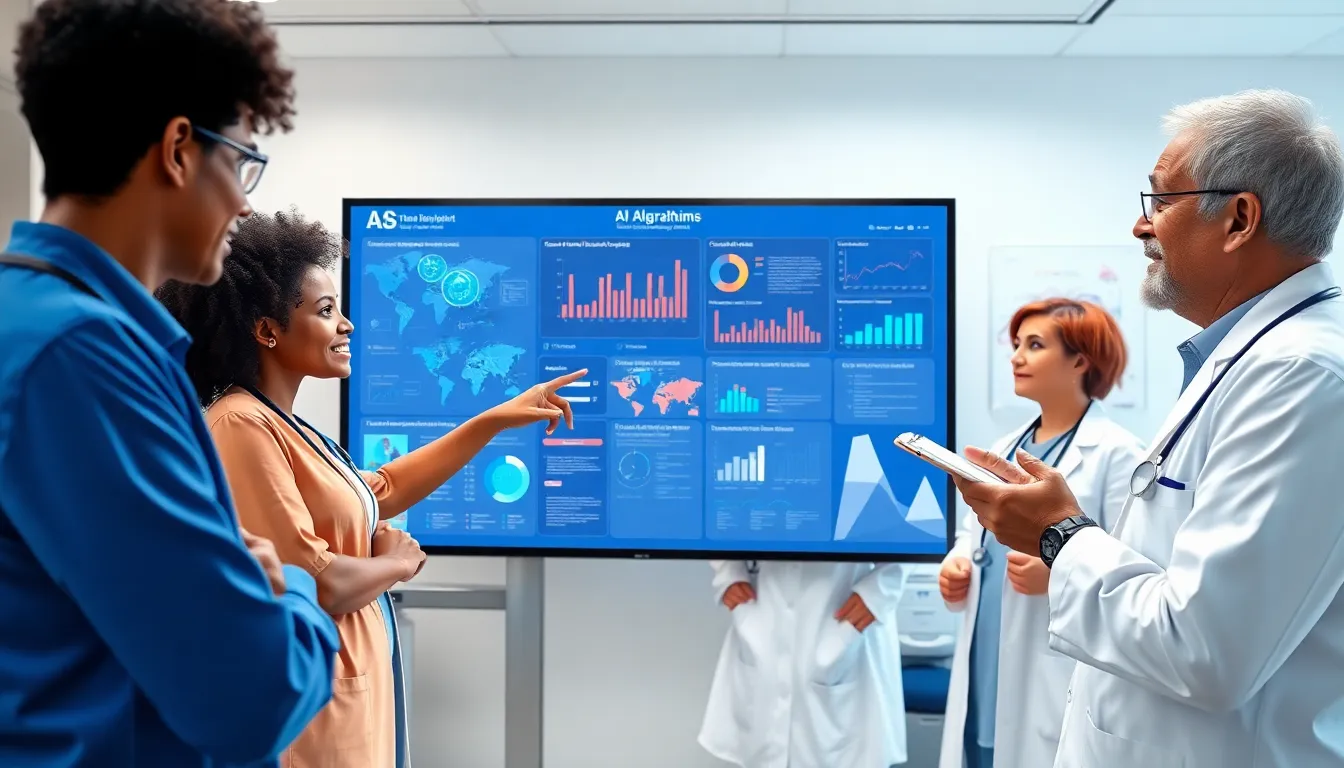In a world where smart devices are popping up faster than a cat video goes viral, IoT interoperability has become the unsung hero of the tech realm. Imagine trying to connect a toaster to a refrigerator—sounds absurd, right? Yet, without seamless communication between devices, that’s exactly what the Internet of Things feels like.
As homes and industries embrace this digital revolution, the need for devices to play nice with each other has never been more crucial. IoT interoperability isn’t just a tech buzzword; it’s the glue that holds our smart ecosystems together, ensuring they work in harmony. So buckle up as we dive into the fascinating world of IoT interoperability and discover why it’s the key to unlocking the full potential of our interconnected lives.
Table of Contents
ToggleOverview of IoT Interoperability
IoT interoperability refers to the ability of diverse smart devices and systems to communicate and operate together seamlessly. Various manufacturers produce smart devices, yet these devices often use different communication protocols and data formats. Effective interoperability allows these devices to exchange information and perform coordinated actions, enhancing user experience and functionality.
Smart homes, for example, rely on devices like security cameras, thermostats, and smart speakers working together. When interoperability exists, users can control multiple devices through a single platform, such as a smartphone app or a voice assistant. This integration simplifies tasks and improves overall efficiency.
Industries also benefit from IoT interoperability. In manufacturing, for instance, machinery from different brands can collaborate on production lines. Real-time data sharing between machines enhances operational efficiency and can lead to significant cost savings. As IoT technology evolves, the demand for robust interoperability increases across sectors.
Challenges in achieving interoperability include the variability of standards and security concerns. Manufacturers often prioritize proprietary solutions, which may hinder compatible communication. However, collaborative efforts are underway to establish common frameworks and standards aimed at enhancing interoperability.
With the growing number of IoT devices, industry leaders advocate for open standards and protocols. Strategies like using Application Programming Interfaces (APIs) foster communication among devices, allowing innovative applications to emerge. As interoperability improves, it contributes to creating interconnected ecosystems that offer enhanced functionality and convenience to users.
Importance of IoT Interoperability

IoT interoperability plays a crucial role in the effectiveness of smart devices in various environments. Seamless communication between devices accelerates innovation and enhances productivity for both businesses and consumers.
Benefits for Businesses
Businesses benefit significantly from IoT interoperability by improving operational efficiency. Increased collaboration among machines from different manufacturers optimizes production processes and reduces downtime. Enhanced data sharing leads to better decision-making by providing real-time insights from various systems. Cost savings arise as firms leverage existing infrastructure instead of investing in proprietary solutions. Industry integration fosters a competitive advantage, enabling companies to adapt swiftly to changing market demands. Ultimately, businesses that prioritize interoperability position themselves for sustainable growth in their respective fields.
Benefits for Consumers
Consumers enjoy numerous advantages with IoT interoperability, resulting in enhanced user experiences. Smart devices work together to create cohesive environments, enabling effortless interactions and convenience. Voice-activated assistants control various devices, from lighting to security systems, all through a single platform. Increased compatibility allows consumers to customize their smart homes efficiently, reducing complexity. Security and privacy improve as standardized protocols develop, offering users peace of mind. Additionally, seamless integration ensures that consumers maximize the value of their technology investments, significantly enhancing their quality of life.
Challenges in Achieving IoT Interoperability
Achieving IoT interoperability faces several challenges that impact device communication and functionality. Understanding these hurdles is crucial for enhancing smart ecosystems.
Technical Barriers
Technical barriers significantly hinder seamless connectivity among devices. Variability in firmware and hardware capabilities creates compatibility issues. Dissimilar communication protocols lead to data exchange problems. Additionally, latency and bandwidth constraints complicate interactions between devices. Manufacturers often prioritize proprietary systems, limiting integration options. These factors contribute to fragmented ecosystems that reduce user satisfaction and device performance.
Standards and Protocols
Standards and protocols play a vital role in IoT interoperability. Inconsistent adoption of communication standards restricts interaction between devices from different manufacturers. Numerous proprietary solutions dominate the market, resulting in silos that prevent comprehensive integration. Industry organizations and stakeholders advocate for establishing common standards to unify device communication. Open protocols facilitate collaboration and enhance interoperability. Emphasizing standardized approaches empowers users to build interconnected ecosystems that leverage diverse smart technology.
Solutions for Enhancing IoT Interoperability
Enhancing IoT interoperability involves various strategies and technologies that facilitate seamless communication among devices. Focused efforts in middleware technologies and the adoption of open standards play a crucial role in achieving this goal.
Middleware Technologies
Middleware technologies act as intermediaries between different devices and applications. These solutions streamline interactions by translating communication protocols and data formats. They enable devices from various manufacturers to work together harmoniously. Examples include message brokers and API gateways, which simplify the integration process. By using middleware, developers can reduce the complexity of connecting diverse systems while enhancing performance and reliability.
Open Standards Adoption
Adopting open standards significantly benefits the IoT ecosystem. Open standards promote compatibility among devices from different manufacturers. They provide a unified framework that simplifies development and implementation processes. With standardized protocols, devices can communicate effortlessly, resulting in a more cohesive user experience. Organizations that champion open standards create an environment where innovation flourishes. The adoption of these standards lowers costs by minimizing the need for proprietary solutions, ensuring a diverse range of devices can coexist in smart ecosystems.
Future Trends in IoT Interoperability
Future advancements in IoT interoperability hinge on emerging technologies and industry predictions.
Emerging Technologies
Edge computing represents a pivotal technology in enhancing IoT interoperability. This approach allows data processing closer to devices, reducing latency and improving real-time decision-making. Artificial intelligence plays a significant role too, enabling smart devices to learn from interactions and optimize communication. Blockchain technology offers secure data exchange, enhancing trust among devices from different manufacturers. Additionally, the integration of 5G networks boosts connectivity capabilities, supporting larger device networks with faster speeds. Technologies such as these facilitate smoother interactions, creating cohesive environments that maximize user satisfaction.
Predictions for the Industry
Forecasts indicate a strong push toward standardized communication protocols within the IoT sector. Industry leaders emphasize the urgency for universal interoperability standards to prevent fragmentation. By 2025, many experts anticipate widespread adoption of open-source solutions, enabling diverse devices to work together seamlessly. Furthermore, an increase in consumer demand for integrated systems will accelerate the development of smart ecosystems. Competitive advantages will accrue to businesses prioritizing interoperability, positioning them for success in an increasingly connected world. Rising focus on security measures will also shape these developments, ensuring user privacy and system reliability.
Achieving IoT interoperability is crucial for maximizing the potential of smart technology in homes and industries. As the demand for seamless device communication grows, embracing open standards and middleware solutions will pave the way for more integrated ecosystems. This collaborative approach not only enhances user satisfaction but also drives innovation across the tech landscape.
With ongoing advancements in technologies like AI and 5G, the future looks promising for interconnected devices. Prioritizing interoperability will empower both consumers and businesses to derive greater value from their technology investments, ultimately leading to smarter and more efficient living environments.





